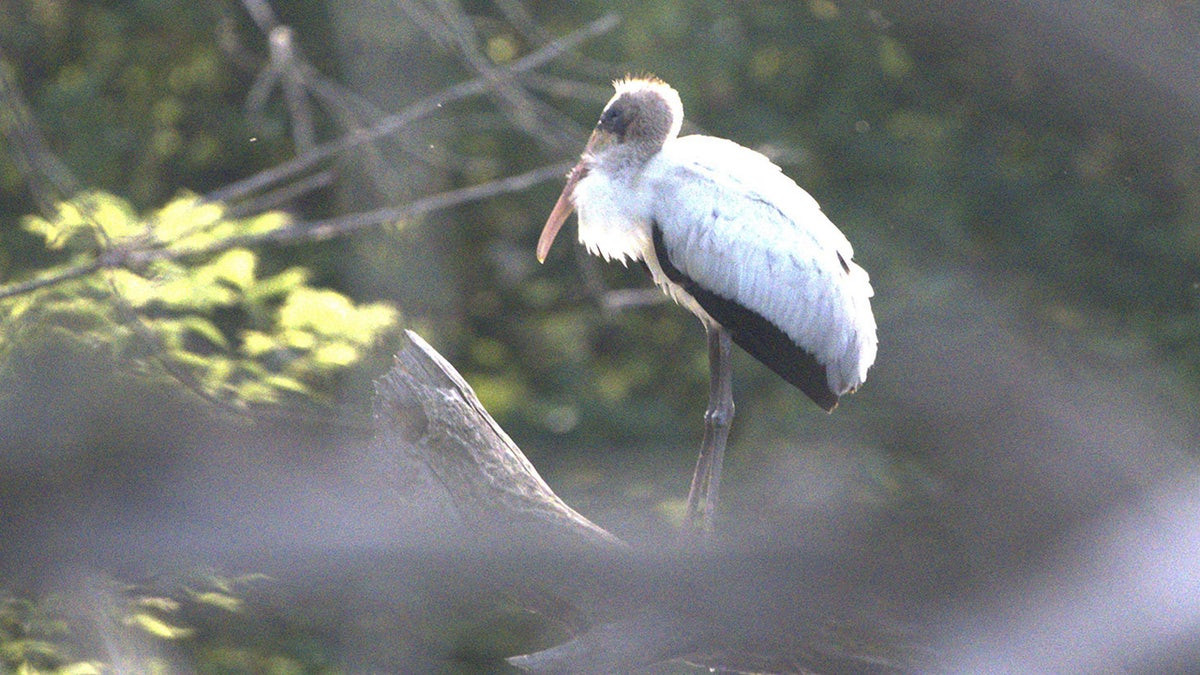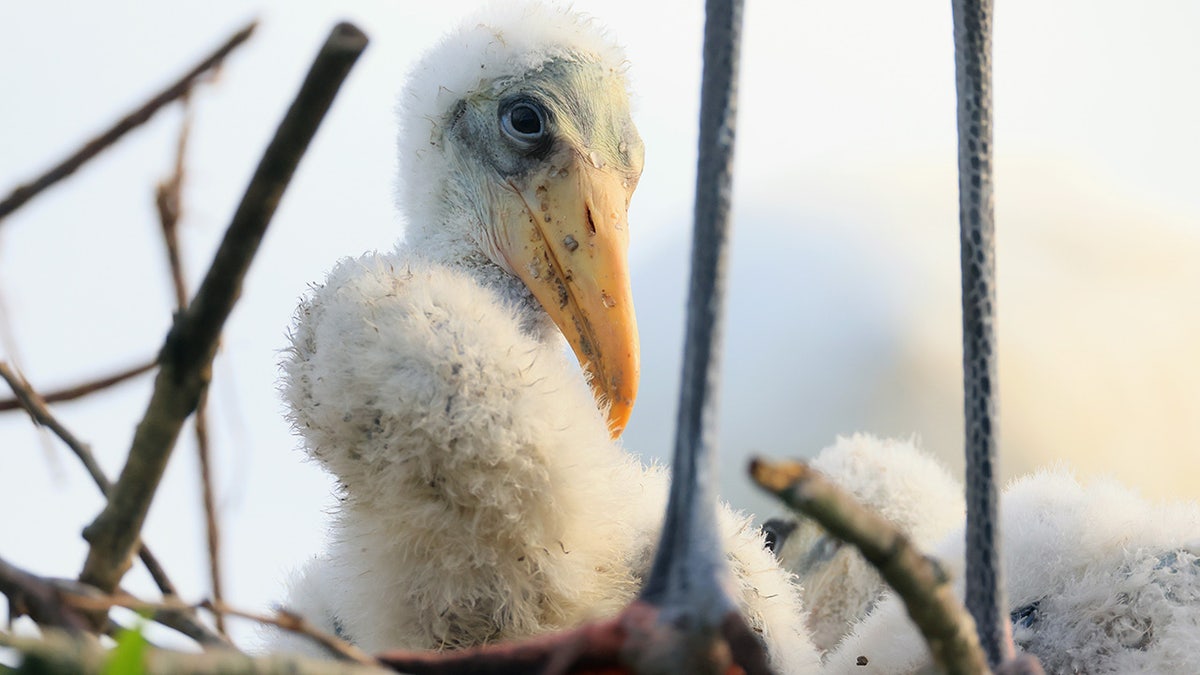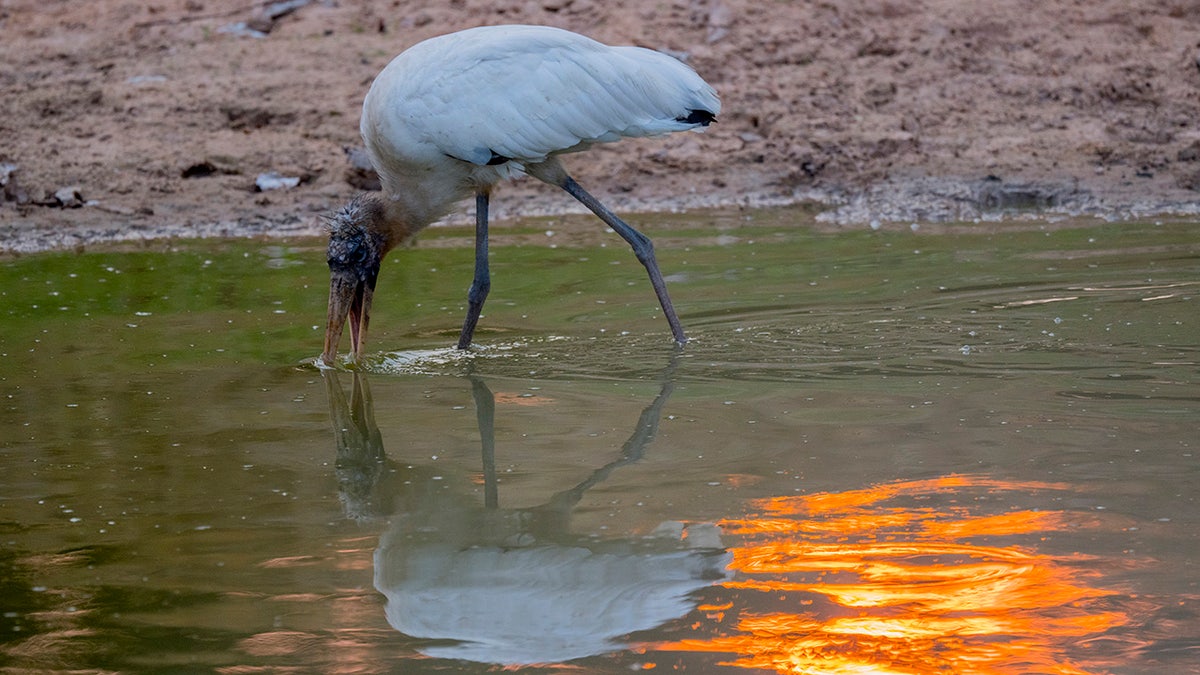
A Mississippi kite was rescued by Katie Adlong in Amarillo, Texas when she found it on the ground near her home and kept it warm by wrapping the small bird, now named Taquito, in a warm tortilla before the wildlife rehabilitation team arrived.
NEWYou can now listen to Fox News articles!
Even birds can get turned around from time to time.
A rare subtropical wood stork was spotted in a very unexpected place recently – Wisconsin, after the bird apparently got lost in flight.
The wood stork typically lives in the Gulf Coast states as well as Central and South America.
The bird, which is listed as threatened under the Endangered Species Act, was first seen last Sunday by a man hunting deer in the Mud Lake Wildlife Area in Columbia County, Wisconsin, northeast of Madison.
TEACHER CAPTURES IMAGES OF ‘VERY RARE’ BIRD NEVER SEEN BEFORE IN US

A juvenile wood stork perches on a branch in the Mud Lake Wildlife Area in Columbia County, Wisconsin, last Monday. (Jeff Bahls via AP)
“It’s always fascinating where these birds come from and where they end up,” said Jeff Bahls, Horicon Marsh Bird Club president, who is also a wildlife technician for the state Department of Natural Resources.
“This is the time of year when we do get these oddball stray birds,” he added.
The hunter first sent Bahls photos of the wood stork that he took during the sighting on Sunday.
Bahls viewed the bird for himself on Monday, saying he thinks it’s a juvenile that hatched this spring because of its light-colored bill.
As wood storks get older, their bills eventually turn black.

A baby wood stork in a nest in Delray Beach, Florida. (Bruce Bennett/Getty Images)
He said young wood storks typically go exploring in the summer because they have no territory.
They are also the only species of stork that breeds in North America.
RARE WHITE MAGPIE THRILLS MAN IN WALES: ‘WOW, WHAT A THING THAT WAS’
The stork was last seen on Tuesday flying northeast with a flock of pelicans.
The wood stork was once endangered with only 5,000 nesting pairs in the United States in the 1970s, but as of 2023 that had grown to more than 11,000 nesting pairs, according to the Center for Biological Diversity.
CLICK HERE TO SIGN UP FOR OUR LIFESTYLE NEWSLETTER
The birds became a protected species in 1984.
Wood storks have also been forced to move north because of habitat destruction and climate change.

An adult wood stork (Mycteria americana) drinks from a pond in Brazil. (Wolfgang Kaehler/LightRocket via Getty Images)
“The wood stork has made a remarkable comeback, but wetland destruction from urban sprawl still looms large over the species,” Stephanie Kurose of the Center for Biological Diversity previously said in a statement.
CLICK HERE TO GET THE FOX NEWS APP
“The Service needs to ensure that wetlands will be protected. It’s also crucial to continue to adequately monitor the stork’s population to make sure ongoing threats don’t undo this hard-fought success.”
The Associated Press contributed reporting.



